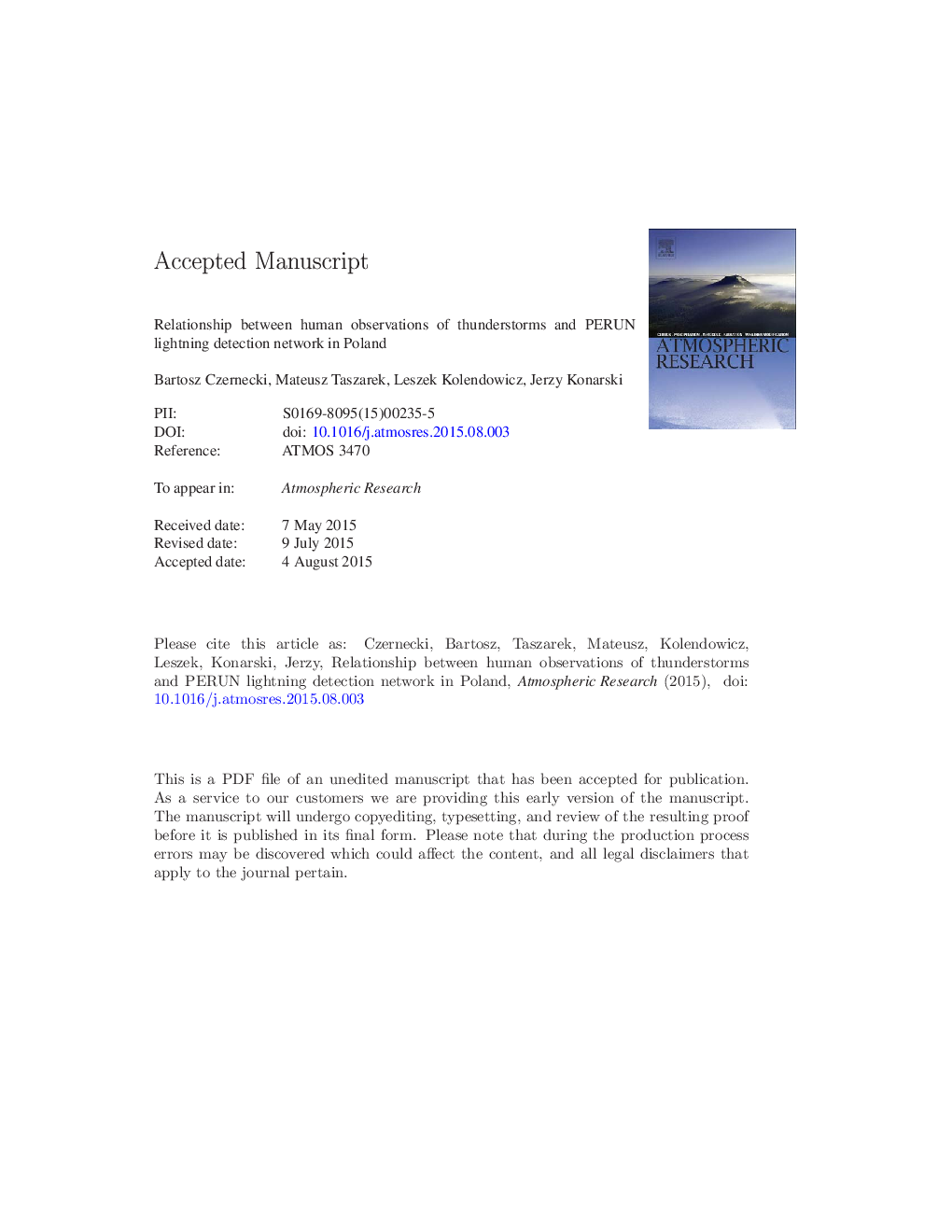| Article ID | Journal | Published Year | Pages | File Type |
|---|---|---|---|---|
| 6343146 | Atmospheric Research | 2016 | 35 Pages |
Abstract
Research presents an overview on thunderstorm occurrence in Poland and focuses mainly on the relationship between human observations of thunderstorms (SYNOP daily summaries) and instrumental lightning detection data (PERUN network) in the timeframe between 2002 and 2013. The total of 4,952,203 cloud-to-ground flashes (2082Â days with thunderstorms) derived from the PERUN lightning database, and 12,419 daily thunderstorm SYNOP reports from 44 meteorological stations (1417Â days with thunderstorms) are compared. Within the use of two different computational methods, we define the threshold value of the human average observational thunderstorm detection range within a meteorological station. Results indicate that the average of this value ranges from 16.9Â km (Delta computational method) to 18.3Â km (threat score computational method). Given the limitations of both methods, we believe that the average of these two (17.5Â km) may be the most reliable estimate that expresses how lightning is perceived by humans. Large differences in observational range values between some of the stations (e.g. from 12Â km in Bielsko-BiaÅa to 24Â km in Åeba) indicate that thunderstorm measurements performed by humans are not homogeneous and are prone to errors. We estimate that an average increase/decrease of observational range by approximately 1Â km results in 1 additional/redundant day in the average annual number of thunderstorm days in the climatological sense. Results indicate that already existing thunderstorm climatology papers that are based on SYNOP thunderstorm reports may present presumably not entirely reliable results and overestimate or underestimate values from the real distribution.
Related Topics
Physical Sciences and Engineering
Earth and Planetary Sciences
Atmospheric Science
Authors
Bartosz Czernecki, Mateusz Taszarek, Leszek Kolendowicz, Jerzy Konarski,
